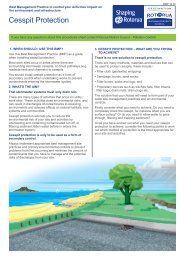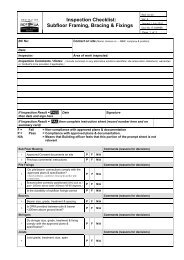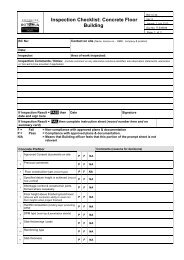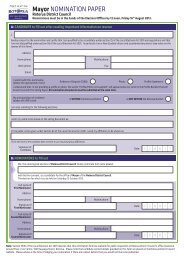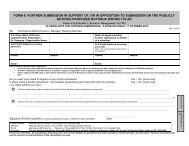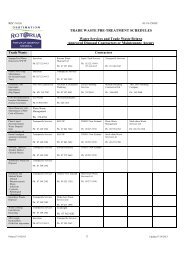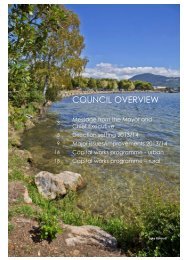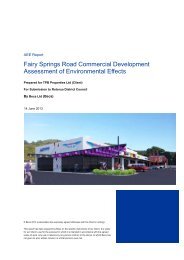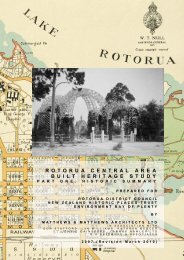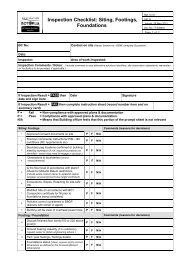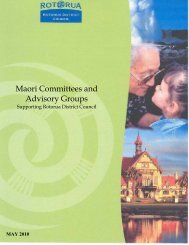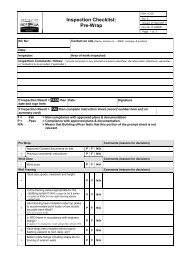Soft Soil Hazard Report - Rotorua District Council
Soft Soil Hazard Report - Rotorua District Council
Soft Soil Hazard Report - Rotorua District Council
You also want an ePaper? Increase the reach of your titles
YUMPU automatically turns print PDFs into web optimized ePapers that Google loves.
Confidential 2010<br />
3.0 GEOTECHNICAL DATA<br />
The <strong>Rotorua</strong> <strong>District</strong> <strong>Council</strong> has provided several reports containing geotechnical<br />
information relating to very soft to soft sediments present in the district (e.g. Cowbourne,<br />
2010; Phillips, 2009). In these reports geotechnical data is provided for soft to very soft<br />
sediments from the results of scala penetrometer tests (most reports) and cone penetrometer<br />
tests (CPT).<br />
In the draft New Zealand Standard for timber framed buildings (DZ3604) ‘good ground’ (i.e.<br />
ground that requires no engineering modification or special design provisions for building<br />
construction) can be identified using the scala penetrometer. If the criteria for establishing<br />
the presence of good ground were used against the provided scala penetrometer test results<br />
then sites at Ohinemutu (Cowborne, 2010), Lynmore (Robinson, 2004) and Te Akau Rd,<br />
Lake Rotoiti (Fitchett, 2007) fail to meet the criteria. The site at Ngongotaha presents a<br />
mixed bag with respect to the scala penetrometer results. Some tests results indicate good<br />
ground is present as per the criteria proposed for the draft NZS 3604, while other test results<br />
show that good ground is not present using the criteria.<br />
Additional testing using CPT’s was undertaken at Ngongotaha (Phillips, 2009) and at Koutu<br />
(Cowbourne, 2009). These tests (and subsequent geotechnical tests) established that for 8-<br />
12 metres below the ground surface significant intervals (up to 10 metres) of soft to very soft<br />
sediments were present. Based on the results of the CPT tests, the soft to very soft<br />
sediments were defined as intervals were the cone resistance (q c ) was less than 0.3 MPa.<br />
In summary, where soft to very soft sediments are the surficial deposit then the criteria for<br />
interpreting the results of a scala penetrometer test as set out in the draft NZS 3604 is<br />
adequate for identifying the presence (or absence) of soft or very soft sediments within two<br />
metres of the ground surface. Where the soft to very soft sediments may be buried or<br />
overlain by younger sediments, then a CPT to a depth of at least 10 m and preferably 20 m is<br />
required to establish if substantial (i.e. greater than 1 m thick) thicknesses of soft to very soft<br />
sediments are present.<br />
4.0 DISCUSSION<br />
A map of the location of soft ground in the <strong>Rotorua</strong> <strong>District</strong> is provided as Figure 1. The map<br />
displays areas where soft ground is present as well as areas where soft ground may have<br />
been present in the past. Four zones are mapped:<br />
GNS Science Consultancy <strong>Report</strong> 2010/81 4



